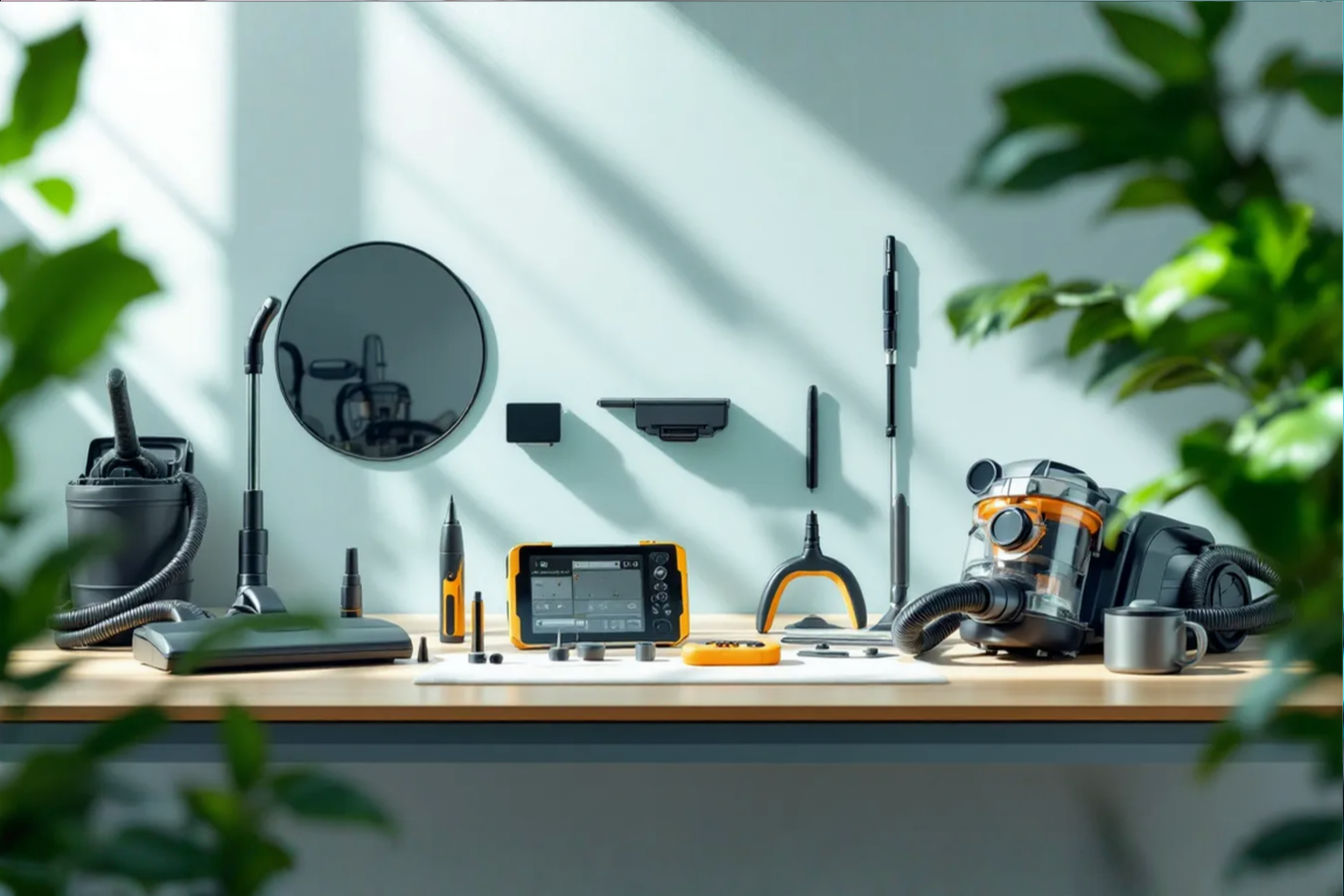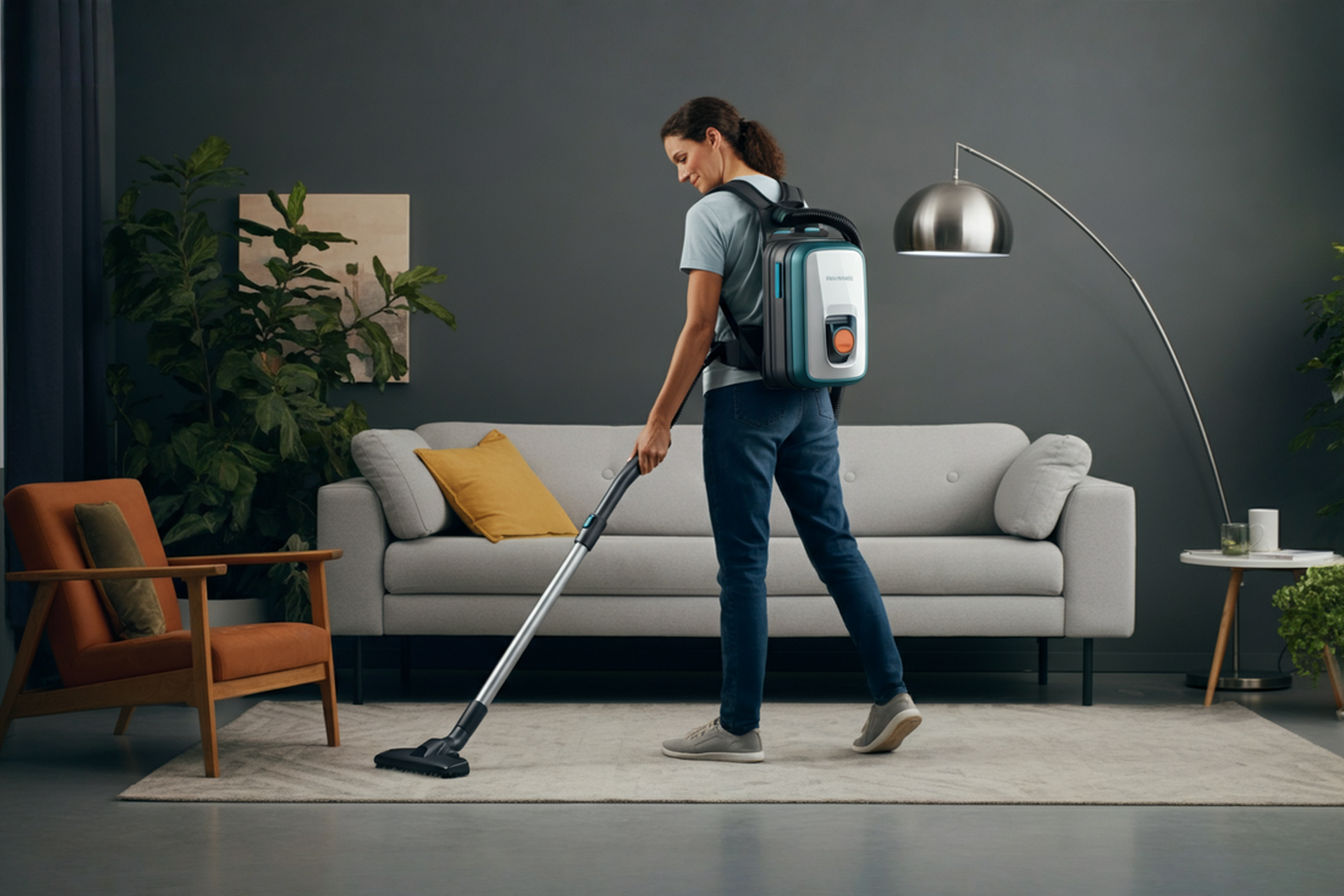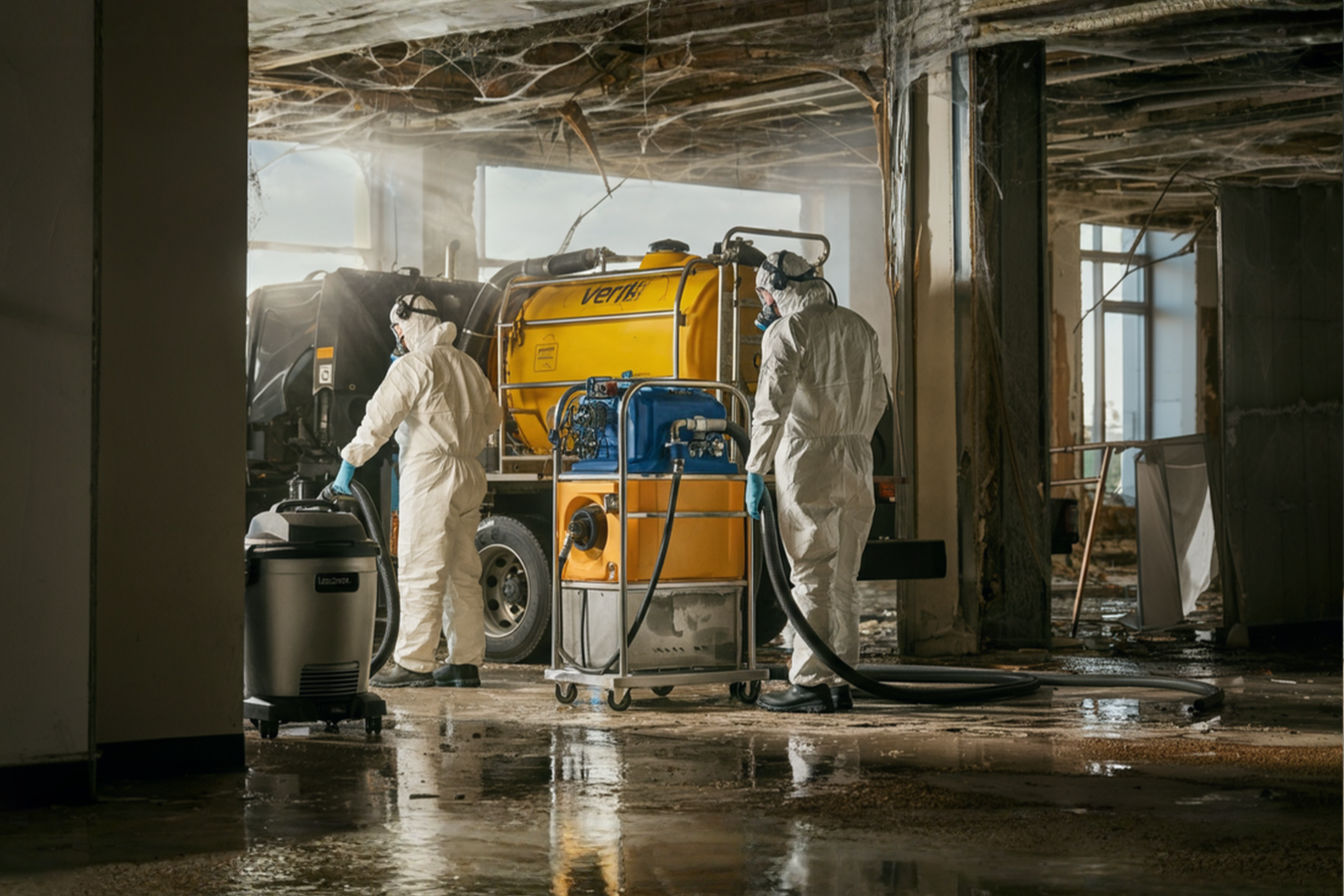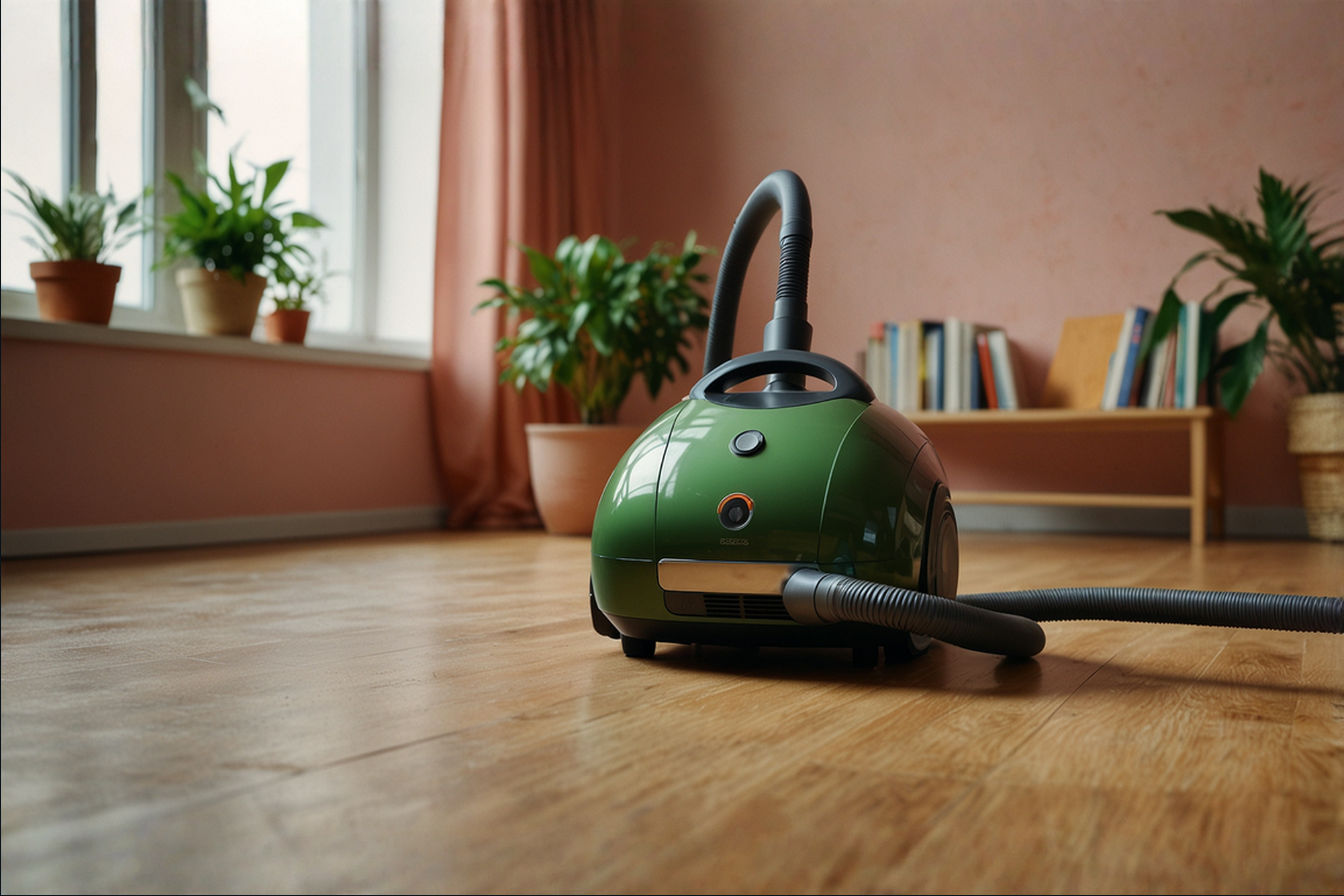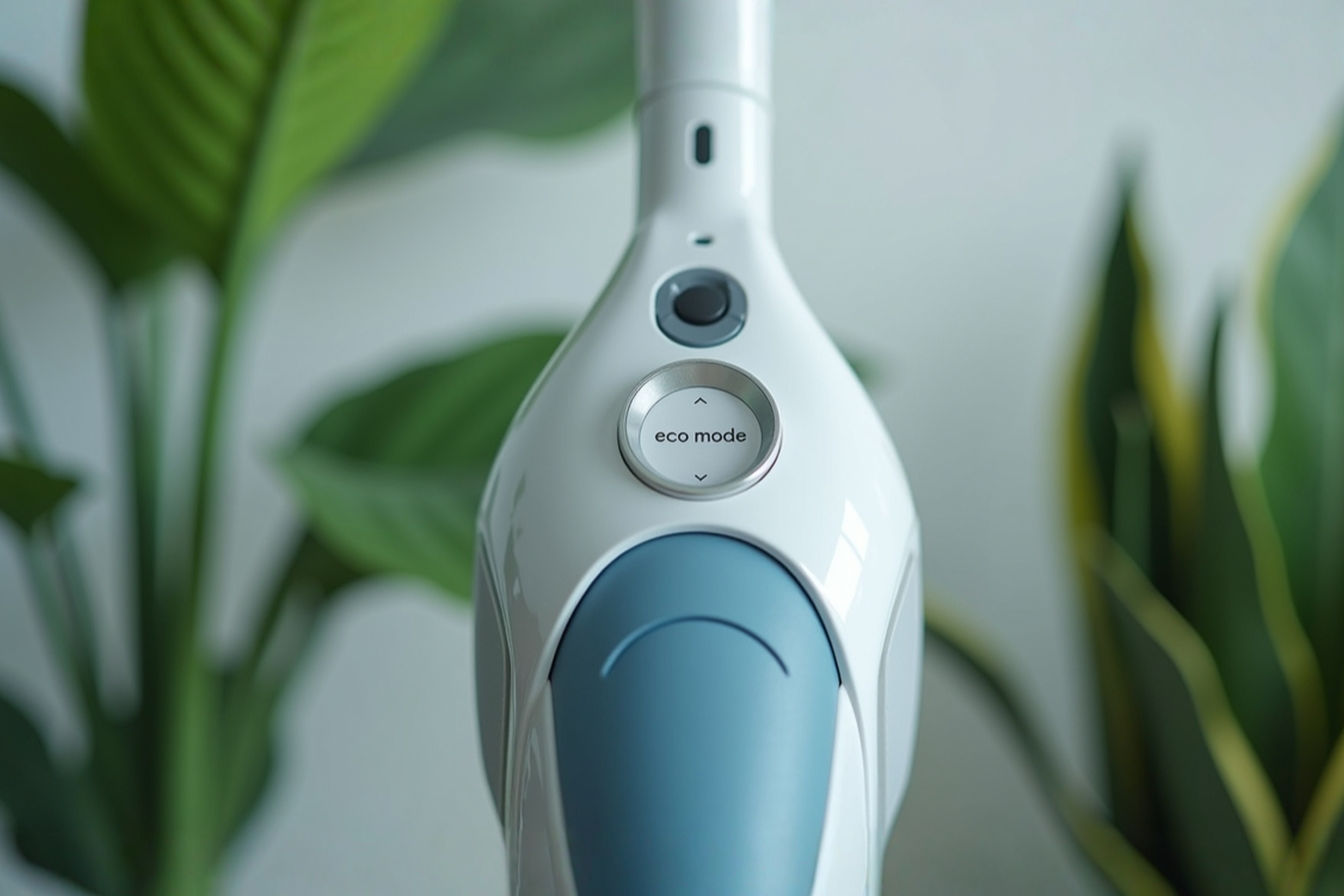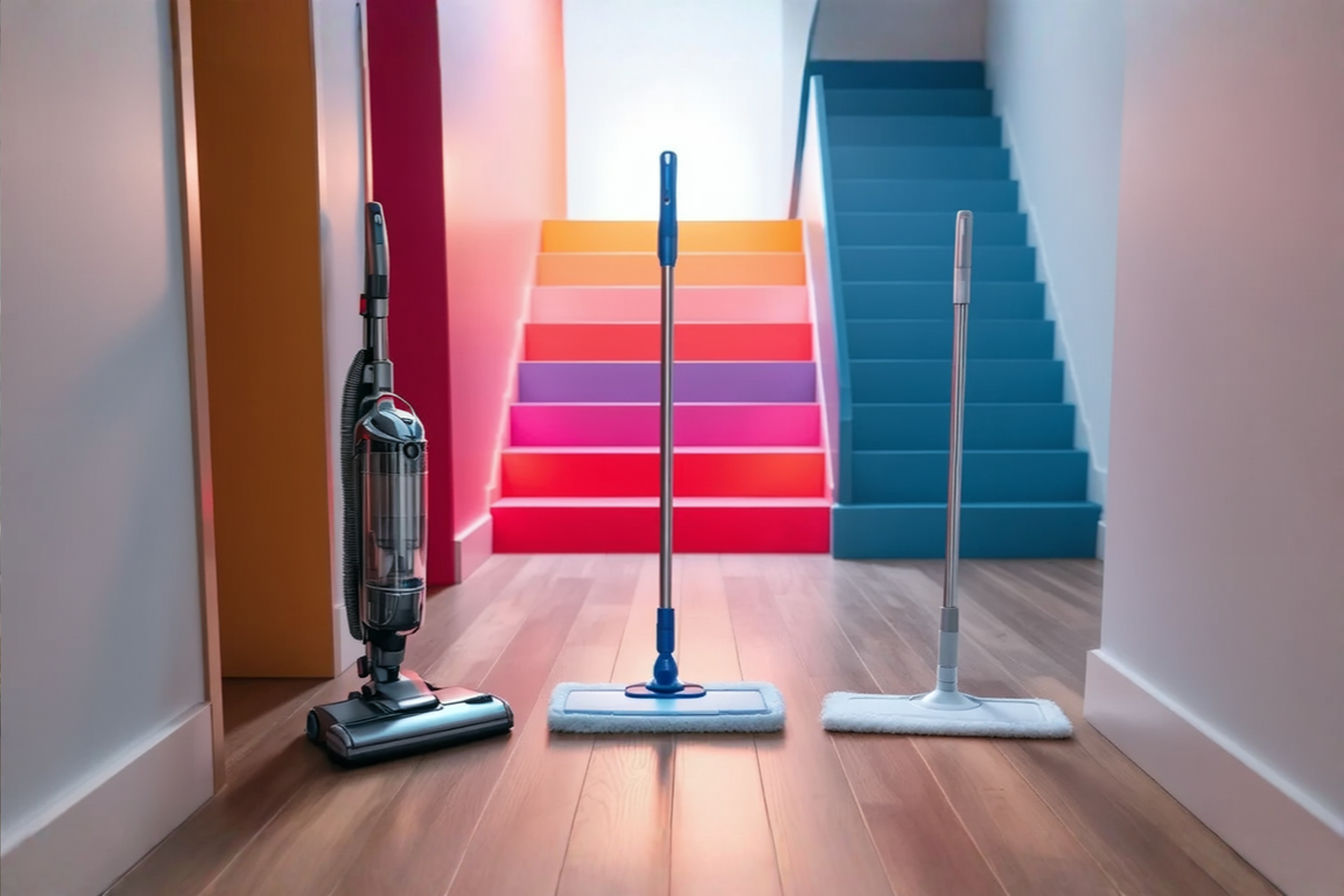Diagnostic Tool Investment: Equipment Worth Buying for Vacuum Cleaner Troubleshooting
Don’t waste money on the wrong vacuum repair tools. Our expert guide identifies the diagnostic equipment that delivers genuine value for DIY troubleshooting and maintenance.
This post may contain affiliate links. If you make a purchase through these links, we may earn a commission at no additional cost to you.
The all-too-familiar sound of a struggling vacuum cleaner can trigger frustration in even the most patient homeowner. That concerning rattle, diminished suction, or complete failure to power on leaves you wondering: what exactly is wrong with this machine? Without proper diagnostic tools, identifying the specific issue becomes a guessing game—one that often ends with an expensive repair bill or premature replacement.
Investing in the right vacuum cleaner diagnostic equipment transforms this scenario entirely. Whether you’re a dedicated DIY enthusiast, a small repair business owner, or simply someone who wants to extend the life of household appliances, having the appropriate tools allows you to pinpoint problems with precision. This capability not only saves money but also reduces waste and builds valuable maintenance skills.
This comprehensive guide examines which vacuum diagnostic tools are truly worth your investment, considering factors such as utility, cost-effectiveness, and application across different vacuum types. We’ll explore essential tools for beginners, professional-grade equipment for serious enthusiasts, and even budget-friendly alternatives that deliver reliable results. By the end, you’ll have a clear understanding of how to build your diagnostic toolkit strategically, making informed decisions based on your specific needs and budget.
Why Invest in Vacuum Diagnostic Tools?
The Financial Case for DIY Vacuum Repair
The economic advantage of diagnosing and repairing your own vacuum cleaner is compelling. Professional repair services typically charge between $50-150 for common vacuum issues, not including parts. This cost can approach or exceed the price of a new mid-range vacuum cleaner. With proper diagnostic tools, many repairs become straightforward DIY projects requiring only minimal investment in replacement components.
Extended appliance lifespan represents another significant financial benefit. Modern vacuums contain sophisticated electronics and motors designed to last many years, yet minor issues often lead consumers to prematurely replace otherwise functional machines. Diagnostic tools help identify simple problems—like clogged pathways or worn belts—that might otherwise be mistaken for major failures.
Prevention of unnecessary parts replacement further strengthens the financial case. Without proper testing equipment, the common approach involves swapping components until the problem disappears—an expensive and inefficient method. Proper diagnosis ensures you replace only what’s actually faulty, eliminating wasteful guesswork.
Beyond Cost: Additional Benefits of Owning Diagnostic Tools
Time savings constitutes a major advantage of having diagnostic equipment on hand. When your vacuum malfunctions, immediate testing allows for quick identification of the issue, eliminating the inconvenience of being without this essential appliance while waiting for professional service. This rapid problem resolution keeps your cleaning routine on track.
For those who purchase used or refurbished vacuum cleaners, diagnostic tools provide invaluable peace of mind. Testing a potential purchase before committing allows you to verify its condition, negotiate fairly based on actual performance metrics, and avoid acquiring someone else’s mechanical problems. This confidence extends to evaluating repair quality after professional service.
The educational value of diagnostic equipment shouldn’t be underestimated. Learning to properly test vacuum components deepens your understanding of how these machines work, building transferable skills applicable to other household appliances. This knowledge fosters greater appreciation for proper maintenance and often leads to improved vacuum performance through regular testing and adjustment.
Who Benefits Most from Vacuum Diagnostic Equipment?
DIY enthusiasts with multiple vacuum cleaners stand to gain significantly from diagnostic tool investments. Households operating several units for different purposes find that testing equipment quickly pays for itself through extended appliance lifespans and reduced maintenance costs. The more vacuums you maintain, the greater your return on investment.
Small repair businesses and resellers absolutely require proper diagnostic equipment to operate professionally. The ability to quickly identify issues, provide accurate repair quotes, and verify successful repairs builds customer trust and business reputation. For these operations, quality testing tools represent essential business infrastructure rather than optional accessories.
Vacuum collectors and enthusiasts who restore vintage models benefit immensely from specialized diagnostic equipment. Older vacuum cleaners often lack modern safety features and require careful testing before use, while accurate performance measurements help preserve historical accuracy during restoration projects. For this specialized group, diagnostic tools transform a challenging hobby into a manageable passion.
Budget-conscious households seeking to maximize appliance longevity find that even basic diagnostic tools provide substantial value. Simple testing equipment allows for preventative maintenance, catching potential issues before they develop into major failures and extending vacuum lifespan significantly. This approach aligns perfectly with frugal living principles, reducing overall household expenses.
Essential Diagnostic Tools: The Must-Haves
Multimeters: The Foundation of Electrical Diagnosis
A quality multimeter forms the cornerstone of any vacuum diagnostic toolkit. This versatile instrument measures voltage, resistance, and current—three critical parameters for troubleshooting electrical components. When your vacuum won’t power on or runs erratically, a multimeter becomes your first investigative tool, helping identify whether the issue stems from power supply problems, motor failure, or control board malfunction.
Features worth seeking in a vacuum-suitable multimeter include auto-ranging capability, continuity testing with audible feedback, and sufficient voltage rating for household applications. The ability to measure AC/DC voltage, resistance, and current provides comprehensive testing capabilities for all vacuum electrical systems. Digital models with backlit displays offer easier reading in dimly lit environments where vacuums are often tested.
Price points for suitable multimeters range widely, from $15 budget models to $100+ professional-grade instruments. For most vacuum diagnostics, a mid-range option between $30-60 delivers the necessary accuracy and durability without excessive investment. Brands like Fluke, Klein Tools, and Amprobe maintain excellent reputations for reliability, while budget-conscious users find adequate performance in models from AstroAI and Etekcity.
Common vacuum problems diagnosed with multimeters include power cord damage, switch failures, motor winding issues, and thermal fuse conditions. By systematically testing connectivity between components, you can trace electrical paths to identify exactly where circuits break down. This precision prevents the unnecessary replacement of functional parts, saving both time and money.
Vacuum Pressure Gauges: Measuring Suction Performance
Vacuum pressure gauges directly measure suction power, allowing quantitative assessment of your cleaner’s most critical function. These specialized instruments connect to the vacuum’s intake and display negative pressure (vacuum) in inches of water lift or kilopascals (kPa). This objective measurement eliminates guesswork when evaluating performance degradation or comparing different vacuums.
Both digital and analog vacuum gauge options exist, each with distinct advantages. Digital models offer precise readings and often include data logging capabilities for tracking performance over time. Analog gauges, while less exact, provide visual indication of pressure fluctuations that might indicate restricted airflow or motor issues. For most home users, a simple analog gauge priced between $20-40 suffices for basic diagnostics.
Interpreting pressure readings requires understanding baseline specifications for your particular vacuum model. Most residential vacuums generate between 70-90 inches of water lift when functioning properly, while commercial models may exceed 100 inches. Readings significantly below manufacturer specifications indicate performance issues requiring further investigation. The context matters—different vacuum types (upright, canister, central) have different typical pressure ranges.
Diagnosable issues using pressure measurements include clogged filters, restricted airflow pathways, motor performance problems, and seal leaks. By taking readings at different points in the vacuum system, you can isolate exactly where pressure drops occur, directing your troubleshooting efforts precisely where needed. This systematic approach transforms vague complaints like “poor suction” into specific, addressable mechanical issues.
Airflow Meters: Assessing System Efficiency
While pressure gauges measure suction intensity, airflow meters evaluate volume—the quantity of air moving through the system measured in cubic feet per minute (CFM). This distinction proves crucial because vacuum cleaning effectiveness depends on both pressure and airflow working in concert. A vacuum might show excellent pressure readings yet deliver poor cleaning performance due to restricted airflow.
Affordable airflow testing options include purpose-built vacuum anemometers ($40-100) and adaptable HVAC airflow meters ($20-50). For budget-conscious DIYers, smartphone-compatible airflow sensors offer basic measurements for under $30. Regardless of price point, these tools provide critical information about system efficiency unavailable through other testing methods.
Certain vacuum problems manifest more clearly through airflow than pressure measurements. Partial blockages often maintain decent pressure while significantly reducing airflow, explaining why some vacuums sound normal yet clean poorly. Similarly, brush roll issues may not affect pressure readings but dramatically impact cleaning performance through reduced airflow at the floor surface.
Using airflow readings to pinpoint blockages involves systematic measurement at different points in the vacuum’s air path. Testing before and after filters, at hose connections, and at the cleaning head allows you to identify exactly where restrictions occur. This precision prevents the common error of replacing parts unnecessarily, directing your attention instead to simple maintenance like clearing blockages or cleaning filters.
Basic Mechanical Tools for Vacuum Disassembly
Accessing internal vacuum components requires specialized disassembly tools that vary by manufacturer and model. Investing in quality implements prevents damage during servicing and ensures proper reassembly. Unlike generic household toolkits, these specialized items address the unique fasteners and components found in modern vacuum cleaners.
Specialized screwdriver sets for major vacuum brands represent an essential investment. Manufacturers like Dyson, Shark, and Miele often use proprietary fastener types requiring specific bits. A comprehensive set covering Torx, tri-wing, security bits, and unusual hex sizes costs between $15-40 but prevents stripped screws and damaged housings during disassembly.
Belt tension measurement tools bring precision to a common vacuum maintenance task. While simple visual inspection works for obvious issues, proper tension gauges ($10-25) ensure replacement belts receive the correct adjustment. This precision extends belt life and maintains optimal brush roll performance, particularly important in high-end vacuums where proprietary belts can be expensive.
Brush roll removal and testing equipment simplifies another frequent maintenance task. Specialized extraction tools ($5-15 per brand) prevent damage to bearing assemblies during removal, while rotation testers ($15-30) verify proper operation after service. These tools prove particularly valuable when addressing performance issues in upright vacuums, where brush roll function directly impacts cleaning effectiveness.
Hose and seal testing implements help identify air leaks that significantly impact vacuum performance. Smoke pens ($10-20) allow visual confirmation of seal integrity, while specialized plugs and caps ($5-15 set) enable isolated pressure testing of specific components. These simple tools address one of the most common yet overlooked causes of reduced suction.
Professional-Grade Diagnostic Equipment
Advanced Electrical Testing Equipment
For serious DIY repair enthusiasts and professional technicians, specialized electrical testing equipment elevates diagnostic capabilities significantly. These advanced instruments detect subtle problems invisible to basic multimeters, allowing for preventative maintenance before catastrophic failure occurs.
Motor load testers provide comprehensive analysis of vacuum motor performance under operating conditions. These sophisticated instruments ($80-200) measure current draw, RPM, torque output, and efficiency—parameters critical for identifying motors beginning to fail but still functioning. For shops handling multiple repairs weekly, these testers quickly identify whether motor replacement proves necessary or if other components cause excessive load.
Circuit analyzers designed for complex vacuum systems deliver deeper insights into modern electronic control boards. Premium vacuum models increasingly incorporate microprocessors, sensors, and digital displays requiring specialized diagnostics. Professional-grade circuit analyzers ($100-300) verify signal integrity, component response, and programming function in these sophisticated systems. Their value increases proportionally with the complexity of vacuums being serviced.
Motor start capacitor testers address a common failure point in higher-end vacuum cleaners. These specialized instruments ($30-80) verify capacitor function, eliminating guesswork when diagnosing hard-starting motors. Given that capacitor replacement represents a fraction of motor replacement cost, this testing capability often pays for itself in a single accurate diagnosis.
The investment justification for serious DIYers depends entirely on repair frequency and vacuum value. Those maintaining multiple premium vacuums find advanced electrical testing equipment economical over time, while occasional fixers might partner with other enthusiasts to share costs. Professional repair shops consider these tools essential business expenses that improve diagnostic efficiency and accuracy.
Specialized Suction Analysis Equipment
Professional water lift gauges offer precision and durability exceeding consumer-grade alternatives. These calibrated instruments ($80-200) provide laboratory-grade accuracy, consistent readings, and rugged construction suitable for daily testing. For professionals whose reputation depends on accurate assessments, these gauges eliminate the uncertainty of budget equipment.
Digital suction profiling systems represent the cutting edge of vacuum diagnostics. These sophisticated tools ($200-500) continuously monitor suction parameters throughout the operating cycle, identifying intermittent issues that static testing might miss. The resulting performance graphs allow technicians to pinpoint exactly when and where suction deteriorates, dramatically simplifying troubleshooting of complex problems.
Comparative testing equipment enables simultaneous evaluation of multiple vacuum pathways or components. These specialized setups ($150-300) feature multiple gauges or sensors that display real-time performance differences between sections of the vacuum system. This side-by-side comparison quickly identifies underperforming elements without sequential testing, significantly reducing diagnostic time for professional repair operations.
Return on investment for these premium tools depends entirely on usage frequency and time value. Professional repair shops handling dozens of vacuums weekly easily justify the investment through labor efficiency gains. Dedicated DIYers must weigh purchase against alternative options like occasional professional service for particularly challenging diagnostics. For those maintaining valuable vacuum collections, these tools often prove worthwhile despite limited usage.
Thermal Diagnostic Tools
Infrared thermometers provide valuable non-contact temperature measurement capability. These affordable instruments ($20-60) quickly identify overheating motors, friction points, and electrical components operating outside normal temperature ranges. By establishing baseline temperatures during normal operation, users can easily spot developing problems before catastrophic failure occurs.
Thermal cameras represent a significant investment ($200-1000) but deliver unmatched diagnostic capabilities for complex vacuum systems. These sophisticated devices create visual heat maps revealing subtle temperature variations invisible to other testing methods. For professional repair operations, thermal imaging quickly identifies bearing issues, winding problems, and circuit board hot spots without disassembly, dramatically reducing diagnostic time.
Heat pattern interpretation requires understanding normal operating temperatures for various vacuum components. Motors typically operate between 120-150°F (49-65°C), with temperatures exceeding 180°F (82°C) indicating potential problems. Control boards generally function below 110°F (43°C), with localized hot spots suggesting component failure. Establishing these baselines for specific vacuum models improves diagnostic accuracy.
Cost-benefit considerations for thermal diagnostic tools vary widely based on application. Basic infrared thermometers deliver excellent value for all users, while thermal cameras generally require professional usage volume to justify their expense. The exception involves extremely valuable vacuum collections, where preventing damage to rare models might alone justify the investment for dedicated enthusiasts.
Budget-Friendly Alternatives and DIY Solutions
Improvised Diagnostic Methods That Actually Work
DIY suction testers created from household items offer surprisingly effective measurement options. A simple water column manometer constructed from clear tubing and a ruler provides reasonably accurate pressure readings for under $10. Similarly, placing tissue paper at specific distances from the intake creates a repeatable visual suction test costing virtually nothing. While lacking the precision of commercial equipment, these improvised methods reliably identify significant performance issues.
Manual airflow testing techniques utilize principles similar to professional equipment without the cost. The classic “seal test”—placing your hand over progressively smaller portions of the intake—quickly identifies restriction locations. Timing how quickly a vacuum inflates a standard trash bag provides a repeatable airflow volume test. Though subjective, these methods deliver useful comparative results when performed consistently.
Basic electrical testing without specialized equipment remains possible for fundamental issues. A simple continuity tester ($5-10) identifies broken wires and failed switches nearly as effectively as expensive multimeters. For power issues, switching the vacuum cord with another known working appliance eliminates power supply questions instantly. These elementary approaches solve many common problems without significant investment.
Limitations of improvised methods must be acknowledged realistically. These techniques identify obvious failures but lack the precision to detect developing problems before failure. Quantitative comparison between vacuum models or tracking performance degradation over time proves difficult without calibrated instruments. For occasional diagnostics or beginning DIYers, these limitations rarely outweigh the cost savings; frequent repairers eventually find the investment in proper equipment justified.
Multi-Purpose Tools for Vacuum Diagnosis
General household tools adaptable for vacuum testing represent excellent value through versatility. A good automotive stethoscope ($10-30) serves double duty for diagnosing bearing noise in vacuum motors and many other applications. Similarly, automotive compression testers with suitable adapters work effectively as vacuum pressure gauges. This multi-purpose approach minimizes specialized tool investment while maintaining diagnostic capability.
Smartphone apps and attachments increasingly offer impressive diagnostic functionality. Decibel meter apps accurately measure vacuum noise levels indicating mechanical problems. Add-on thermal cameras ($200-300) transform smartphones into professional diagnostic tools at a fraction of dedicated equipment cost. Physical attachments measuring airflow ($30-80) connect to phone ports and provide digital readings comparable to standalone equipment.
When determining if multi-purpose tools suffice versus specialized equipment, consider repair frequency and vacuum value. For occasional maintenance of standard models, adaptable tools generally provide adequate diagnostic capability. Professional repair operations or those maintaining premium vacuums eventually find dedicated instruments more efficient and accurate. This natural progression often begins with multi-purpose tools and evolves as repair volume or complexity increases.
Strategic Investment Approach for Beginners
First-time buyers should prioritize tools offering maximum utility across various repairs. A quality digital multimeter provides essential electrical diagnostics applicable to virtually all vacuum issues. Combining this with a basic pressure gauge creates a starter kit addressing both electrical and suction problems—the two most common repair categories. This foundation, obtainable for under $75, solves approximately 70% of typical vacuum issues.
Adopting a gradual acquisition strategy makes comprehensive diagnostics affordable over time. Begin with essential electrical and pressure testing equipment, then add specialized tools as specific needs arise. This approach spreads investment over months or years while immediately enabling basic repairs. Each addition expands your diagnostic capabilities incrementally, with purchases guided by actual repair challenges rather than theoretical needs.
Tool sharing and community resources offer another cost-effective approach. Vacuum enthusiast forums frequently organize lending libraries where members share specialized equipment. Maker spaces and tool libraries in many communities provide access to expensive diagnostic instruments for minimal fees. These collaborative approaches give beginners access to professional-grade equipment without individual investment, making advanced diagnostics accessible to everyone.
Diagnostic Tools by Vacuum Problem Type
Loss of Suction: Diagnostic Approach
Primary tools for suction diagnostics include pressure gauges, airflow meters, and smoke pens. This complementary toolkit addresses the three main factors affecting vacuum performance: negative pressure generation, air volume movement, and system seal integrity. Combined, these instruments transform vague complaints of “poor cleaning” into specific, addressable mechanical issues.
A systematic testing methodology begins at the cleaning head and progresses backward through the vacuum system. Initial measurements at the cleaning head establish overall performance, while sequential testing at connection points (hose junctions, dirt container, filter housing) identifies where significant pressure drops occur. This methodical approach quickly isolates problems to specific sections, eliminating unnecessary disassembly and parts replacement.
Interpreting results requires understanding typical values for your specific vacuum type. Upright vacuums generally produce 55-75 inches of water lift and 60-100 CFM airflow when functioning properly. Canister models typically generate 70-100 inches and 50-90 CFM, while central vacuum systems may exceed 120 inches with 110-140 CFM. Readings significantly below these ranges indicate performance issues requiring further investigation.
Electrical Problems: Testing Equipment and Methods
Power supply and cord testing represent the first diagnostic step for non-functioning vacuums. A multimeter instantly verifies outlet voltage and identifies damaged power cords through continuity testing. More sophisticated line separators ($15-40) safely isolate and test individual conductors without disassembly. These simple tests often solve power issues without component replacement.
Switch and control board diagnostics require slightly more sophisticated approaches. Multimeters verify basic switch functionality through continuity testing, while logic probes ($15-40) assess digital signals in computerized vacuum systems. For advanced control boards with microprocessors, specialized circuit analyzers provide deeper insight, though basic function can often be verified with simpler instruments.
Motor circuit analysis equipment addresses the most complex electrical component. Multimeters measure motor winding resistance identifying open circuits, while current clamps ($25-80) assess operational load without circuit interruption. Advanced motor analyzers evaluate startup current, running efficiency, and early failure indicators, though these sophisticated diagnostics typically exceed DIY requirements.
Mechanical Issues: Rotation and Drive Systems
Brush roll performance testing tools include rotation gauges, contact pattern indicators, and bearing analyzers. Simple rotation measurement devices ($15-30) verify proper brush speed—typically 4500-5500 RPM for effective cleaning. Contact pattern indicators (often DIY using chalk dust) confirm even bristle engagement across the cleaning path. Advanced bearing analyzers detect developing problems before catastrophic failure, though stethoscopic examination provides similar insights at lower cost.
Belt tension and condition analysis tools ensure optimal drive system function. Tension gauges ($15-40) verify proper adjustment, preventing premature wear from excessive tightness or performance issues from slack installation. Specialized belt condition analyzers measure durability characteristics, though visual inspection adequately identifies cracking, glazing, or stretching in most situations.
Bearing and rotation testing equipment addresses common failure points in vacuum drive systems. Infrared thermometers quickly identify overheating bearings during operation, while mechanical stethoscopes isolate unusual noises to specific components. Professional repair operations sometimes utilize vibration analyzers ($200+) to detect developing bearing issues before failure, though this capability exceeds most DIY requirements.
Filtration System Assessment Tools
Filter efficiency testers evaluate this critical yet often overlooked vacuum component. Professional instruments measure particle capture rates and filtration efficiency, though DIY approaches using smoke tests provide useful insights at minimal cost. For HEPA filters specifically, proper testing requires specialized particle counters, making professional evaluation more practical than equipment purchase for most users.
Airflow restriction measurement directly quantifies filter impact on vacuum performance. By measuring airflow before and after filters using manometers or airflow meters, users can determine exactly how much efficiency is lost through restrictive filtration. This objective measurement eliminates guesswork when determining filter replacement needs, often identifying problems while cleaning performance remains adequate.
Dust containment and leakage testing ensure filtration systems function as designed. Smoke pens ($15-25) visually identify escaping particles around seals and connections, while particulate meters ($100-200) provide quantitative measurements when absolutely required. For most users, the smoke pen approach adequately identifies leakage requiring attention without excessive equipment investment.
How to Use Vacuum Diagnostic Tools Effectively
Basic Diagnostic Methodology
A systematic testing approach ensures accurate problem identification with minimal effort. Begin with the simplest, least invasive tests (visual inspection, basic electrical checks) before progressing to more complex diagnostics. Document baseline readings for your vacuum when functioning properly to provide comparison points when problems develop. This methodical progression prevents missed issues while maximizing diagnostic efficiency.
Documentation and comparative analysis transform subjective impressions into objective data. Recording test results creates a performance history revealing gradual degradation that might otherwise go unnoticed. This approach proves particularly valuable for detecting developing problems before catastrophic failure, enabling preventative maintenance rather than emergency repair.
Establishing baseline performance metrics for your specific vacuum model provides crucial context for all diagnostics. When newly purchased or freshly serviced, measure and record electrical parameters, suction pressure, airflow, temperature, and noise levels. These values serve as your reference standard against which future performance can be compared. Without established baselines, determining whether current readings indicate problems becomes challenging.
Safety considerations when testing cannot be overemphasized. Always disconnect power before internal electrical diagnostics, use appropriate insulation when measuring live circuits, and properly secure moving components during testing. Vacuum motors operate at high speeds with considerable torque, creating potential hazards during diagnostic procedures. These simple precautions prevent accidents without complicating the testing process.
Tool Calibration and Maintenance
Ensuring accurate readings requires proper calibration and maintenance of diagnostic equipment. Even quality instruments drift over time, producing misleading results if not periodically verified. For critical measurements, annual professional calibration provides maximum accuracy, while DIY calibration against known reference points offers a practical alternative for most users.
A maintenance schedule for diagnostic equipment preserves accuracy and extends instrument life. Basic practices include proper storage in protective cases, battery removal during extended non-use periods, and regular cleaning of contacts and connection points. These simple procedures prevent common issues like battery corrosion and contaminated sensors that compromise measurement integrity.
Signs of tool malfunction often appear subtly before complete failure. Erratic readings, difficulty achieving stable values, and results inconsistent with observable vacuum performance all indicate potential instrument problems. When diagnostic tools begin displaying these behaviors, verification against known reference points should precede any vacuum repairs based on their readings. This verification prevents “chasing ghosts”—addressing nonexistent vacuum problems created by faulty test equipment.
Interpretation of Diagnostic Results
Reference values for common vacuum types provide essential context for test results. Upright vacuums typically draw 4-8 amps, generate 60-70 inches of water lift, and produce 60-100 CFM airflow. Canister models generally draw 7-12 amps, generate 70-100 inches of water lift, and produce 50-90 CFM. Central systems may draw 12-15 amps and exceed 120 inches of water lift with 110-140 CFM airflow. Significant deviation from these ranges warrants further investigation.
Correlating multiple test results often reveals problems invisible to single measurements. A vacuum showing acceptable pressure readings but reduced airflow likely suffers from partial blockage rather than motor problems. Similarly, normal electrical readings with elevated operating temperature suggest mechanical friction issues. This holistic approach prevents misdiagnosis based on isolated parameters.
Determining repair needs from diagnostic data involves balancing several factors. Technical findings must be assessed against repair costs, component availability, and vacuum replacement value. A perfectly diagnosed problem may not justify repair if component costs approach replacement value or parts availability requires extensive delays. This practical consideration transforms technical diagnostics into actionable repair decisions.
Where to Purchase Quality Diagnostic Tools
Reliable Sources for Professional Equipment
Specialized HVAC and vacuum repair suppliers offer the most comprehensive selection of diagnostic equipment. Companies like Grainger, TestEquip, and industry-specific distributors provide professional-grade instruments with proper calibration and support. These sources typically exceed retail options in quality and selection, though their prices reflect the professional market they serve.
Retail options for basic diagnostic tools include hardware chains, electronics retailers, and automotive supply stores. These convenient sources offer multimeters, infrared thermometers, and basic pressure gauges at competitive prices, often providing immediate availability for urgent repair needs. While selection and specialization may be limited, the quality proves sufficient for most DIY repair scenarios.
Online marketplaces with quality guarantees have revolutionized tool acquisition for DIY enthusiasts. Major platforms like Amazon offer robust return policies mitigating risk when purchasing instrumentation, while specialized suppliers provide expertise and curated selections. Reviews from actual users help identify quality options, though research remains essential to avoid substandard equipment masquerading behind attractive pricing.
Quality Assessment for Second-Hand Tools
Testing used diagnostic equipment before purchase ensures you’re not inheriting someone else’s problems. For electrical instruments, verify basic functionality against known reference points—measure standard battery voltage or household current. Pressure gauges can be roughly verified against new bicycle pumps with built-in gauges. These simple checks identify obvious malfunctions without specialized equipment.
Red flags when purchasing used tools include physical damage, battery compartment corrosion, and missing accessories or instructions. Digital instruments with erratic displays, difficulty holding consistent readings, or unusually dim screens likely need repair or replacement. Quality diagnostic equipment generally maintains functionality for many years when properly maintained; significant issues during initial inspection rarely improve with time.
Calibration services for second-hand equipment transform uncertain purchases into reliable instruments. For critical measurements, professional calibration costs between $25-75 depending on instrument complexity. This investment ensures accuracy regardless of previous treatment, essentially resetting the tool’s reliability. For less critical applications, relative measurements often prove sufficient even without perfect calibration—consistency sometimes matters more than absolute accuracy.
Cost-Benefit Analysis of Diagnostic Tool Investment
Long-Term Financial Benefits
Average repair cost savings over 5 years make a compelling case for diagnostic tool investment. With professional vacuum repairs averaging $75-150 plus parts, even modest DIY capability prevents significant expense. Assuming two repairs annually at average cost, tool investment pays for itself within 1-2 years for most households. This calculation becomes even more favorable for multiple vacuum owners or those with premium models where professional service costs escalate quickly.
Extended vacuum lifespan value substantially enhances return on investment. Quality vacuums designed to last 7-10 years often fail prematurely due to minor issues left unaddressed. By identifying and correcting these problems early, diagnostic equipment extends useful life by 30-50% according to manufacturer studies. This extension effectively reduces the annual cost of vacuum ownership, contributing significant value beyond direct repair savings.
The potential for repair side business represents another economic consideration. Skills and equipment developed for personal use can generate supplemental income through informal repair services. Many DIY enthusiasts eventually discover their expertise has market value, transforming a practical hobby into revenue generation. While building a repair business requires additional considerations, the diagnostic equipment serves as foundational infrastructure for this possibility.
When to Repair vs. Replace Based on Diagnostics
Using diagnostic data for informed decisions transcends simple problem identification. Objective measurements allow rational cost-benefit analysis rather than emotional or convenience-based decisions about repair versus replacement. When proper diagnostics indicate a simple, inexpensive repair will restore full functionality, the choice becomes obvious despite marketing pressure promoting replacement.
Cost thresholds for repair justification depend on vacuum type, age, and replacement cost. The general industry guideline suggests repairs exceeding 50% of replacement cost warrant careful consideration, while those under 30% typically justify service. For premium vacuums with higher replacement costs, this threshold increases accordingly. Diagnostic data identifying multiple developing issues may suggest replacement even when immediate repair costs seem reasonable.
Diagnostic indicators of vacuum end-of-life help prevent wasted repair investment. Motor commutator wear beyond serviceable limits, multiple simultaneous system failures, or unavailable replacement parts clearly suggest replacement regardless of theoretical repairability. These objective findings prevent the common repair trap—investing in one component only to have another fail shortly thereafter. Quality diagnostics identify not just current issues but developing problems that affect the repair/replace calculation.
Conclusion: Building Your Vacuum Diagnostic Arsenal
The journey to effective vacuum cleaner diagnosis doesn’t require massive initial investment. Beginning with basic electrical testing equipment and gradually adding specialized tools creates a capable diagnostic arsenal for most household needs. This strategic approach delivers immediate problem-solving capability while spreading costs over time.
Different user types benefit from tailored starter kits. Casual DIYers might begin with just a multimeter and basic pressure gauge, addressing the most common issues. Dedicated enthusiasts often add airflow measurement and specialized mechanical tools earlier in their journey. Professional operations require comprehensive equipment from the outset, considering diagnostic efficiency as an operational necessity rather than convenience.
Future trends in vacuum diagnostics increasingly incorporate digital technology and connectivity. Bluetooth-enabled tools storing historical data, smartphone integration for complex analysis, and expert system software interpreting results represent the leading edge of this evolution. While these advanced capabilities currently command premium prices, increasing adoption will eventually bring them within reach of dedicated DIYers.
The environmental and economic benefits of extended vacuum life through proper diagnostics cannot be overstated. Every repair preventing premature replacement reduces landfill waste while conserving the resources required for manufacturing new appliances. This sustainability aspect adds value beyond direct financial savings, contributing to more responsible consumption patterns. By investing in appropriate diagnostic tools, you not only save money but participate in a more sustainable approach to household appliance management.
Whether you’re a casual DIYer seeking to maintain a single household vacuum or a dedicated enthusiast managing multiple machines, appropriate diagnostic tools transform frustrating guesswork into systematic problem resolution. The investment pays dividends through extended vacuum life, reduced repair costs, and the satisfaction of successful DIY maintenance. Your diagnostic toolkit will grow naturally as your confidence and repair capabilities develop, with each addition expanding your ability to keep these essential household appliances functioning optimally for years beyond their typical lifespan.

